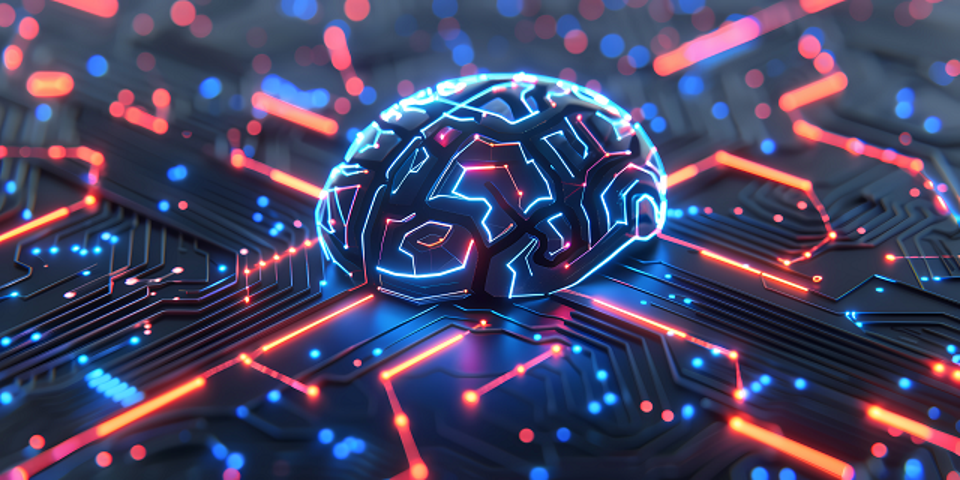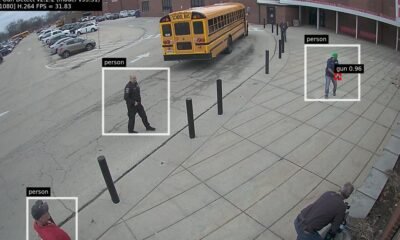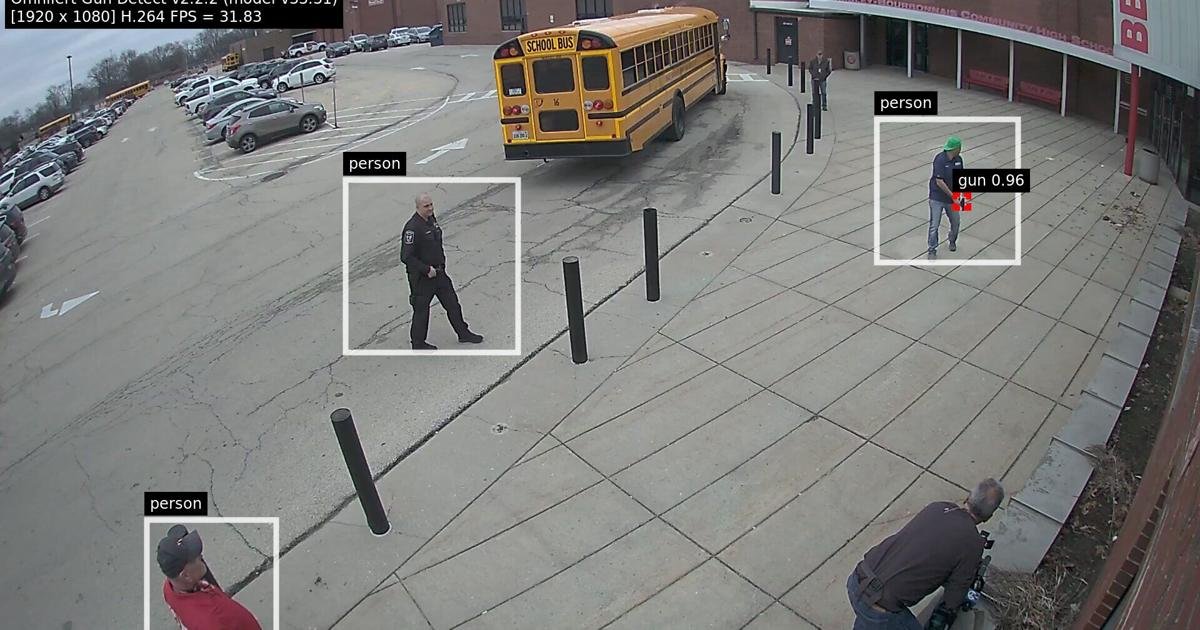Education
How AI Search Is Shaping The Future Of Education And Research

Artificial Intelligence
The transformative power of AI is being felt across industries, and education is no exception. AI search tools are not a passing trend. They’re completely reshaping how students engage with academic content, conduct research, and enhance their learning experiences. As the amount of information available online only continues to grow exponentially, AI platforms are stepping in to streamline the learning process and empower students to do their best work. With this growth comes the daunting responsibility of search tools to prioritize credibility and transparency while maintaining efficacy.
The Promise of AI in Education
AI’s role in education isn’t to replace traditional learning, but to enhance it. “Students today face an overwhelming amount of information, and sifting through it can be tedious,” said Luke Kim, CEO of Liner, the AI search engine tailored specifically to the needs of students and researchers. “AI can streamline that process, so students spend less time searching and more time thinking critically,”
According to Kim, “It’s exciting to see how AI, when thoughtfully implemented, becomes a partner in the learning journey. Instead of replacing learning, AI enhances it by allowing students to work smarter, not harder.”
Liner, for example, surfaces contextually relevant academic sources, so that students spend less time searching for credible information and more time synthesizing knowledge and thinking critically about what they find. This is especially important for the newest generation of students who have taken a liking to AI and made it part of today’s education system. Gen-Zers lead the way in using AI tools for education, with 37.6% leveraging generative AI for learning—more than any other generation, according to a recent Prosper Insights & Analytics survey. And it’s likely that this number will only increase as AI tools become more mainstream and students who have used AI tools as young students enter the next phase of their education.
Prosper – Use Generative Artifical Intelligence For
The Role of AI Search Tools in Research
The need for reliable, verifiable information has never been more pressing in academics. A recent Prosper Insights & Analytics survey reveals that nearly 46.6% of Gen-X adults use AI for research, with 43.3% of all respondents across generations following suit. This trend reflects a growing desire for smarter, more efficient ways to navigate vast amounts of data, verify sources, and structure findings – transforming how students approach education as a whole.
Prosper – Use Generative Artifical Intelligence For
The use of generative AI tools shines a spotlight on this challenge: it’s not just about finding information; it’s about ensuring that the sources students’ access are credible and trustworthy. In 2016, Stanford University found that many students struggle to accurately judge the credibility of information online – an issue that has only worsened with the explosion of misinformation in recent years. This underscores the risks of relying on general-purpose search engines. To navigate this complex landscape, students need AI tools designed to prioritize transparency, offer citations, and enable them to easily verify the accuracy of the information they find.
Kim pointed out that Liner’s emphasis on source transparency sets it apart from other options for students. “Every result we generate is backed by citations, so students can double-check the validity of what they’re reading,” he explained. In 2023, another study from Stanford found that “a mere 51.5% of generated sentences are fully supported by citations and only 74.5% of citations support their associated sentence” on AI search tools like Bing Chat or YouChat. Without clear sources, accidental plagiarism can easily happen, as students may unknowingly use unverified or misattributed content, with the potential for severe consequences. By taking a transparent and cite-based approach, tools can not only provide higher-quality research but also build trust in AI tools, which is crucial for long-term adoption in academic settings.
Ethical Concerns and the Role of Transparency
The widespread adoption of AI in education highlights the need for tools that do more than just surface information. While platforms like Liner offer features that help students structure essays, customize search depth to filter relevant data, and shared folders to collaborate more effectively, this shift is larger than any one tool. It signals a profound change in how students engage with learning materials and manage research workflows. The implications are clear: AI’s role in education will only continue to increase, but it must be paired with transparency, credibility, and adaptability to meet the evolving needs of both students and educators.
While AI presents numerous benefits for education, it also raises ethical concerns. Misinformation, bias, and the lack of human oversight in AI decision-making are issues that both sides – the AI developers and the educators and students – need to address. According to a recent Prosper Insights & Analytics Survey, 38.6% of Gen-X adults are concerned about the need for human oversight in AI applications, while 29.9% express concerns about the transparency of AI processes. These concerns highlight the need for clear, accountable AI that can be used responsibly and ethically in educational settings.
Prosper – Concerns About Recent Developments in AI
Kim emphasizes the importance of transparency and ethical AI use, especially when dealing with students “We give students full control over their research experience,” he said. “They can filter out sources they don’t trust, like personal blogs or Wikipedia, and every search result comes with detailed citations so that students can make informed decisions about the information they use.”
This focus on transparency ensures that students can trust the AI tools they use in their academic work. By providing clear citations and allowing users to control the sources they access, developers and AI builders can mitigate concerns about misinformation and bias, ensuring that AI remains a valuable asset in the educational process.
The Future of AI in Education
Looking to the future, Kim envisions a more personalized and empowered educational experience through AI. Rather than a one-size-fits-all approach, AI will allow for tailored learning experiences based on a student’s unique needs. Whether it’s helping students synthesize information, improve their writing, or understand complex concepts, AI will serve as a partner in fostering curiosity and critical thinking.
“There’s huge potential for AI to create a more level playing field in education,” Kim said. “With tools like Liner, students with different learning styles, language barriers, or attention challenges can access the same high-quality information as anyone else.”
As AI search tools continue to advance, they hold the promise of transforming education into a more personalized, efficient, and inclusive experience for students worldwide.
Education
Seiji Isotani’s Mission to Humanize AI in Education
Newswise — As Penn GSE expands its leadership in AI and education, newly hired associate professor Seiji Isotani adds a vital perspective shaped by decades of work in Brazil, Japan, and the United States.
A pioneer in intelligent tutoring systems, Isotani develops AI tools that adapt to the needs of students and teachers—especially in under-resourced settings. But for him, technology is never the starting point.
In this Q&A, he reflects on the childhood experience that launched his career, the importance of human-centered design, and why responsible AI must begin with understanding the people it’s meant to serve.
Q: What originally drew you to the field of educational technology?
A: Working with educational technology holds special meaning for me, inspired by a personal experience. As a child, I struggled in school. I couldn’t read or work with numbers at age 7, and some even thought I had a learning disability. Fortunately, my mom, a talented public school math teacher, and my dad, a professor at the University of São Paulo, worked with me every night until I caught up. Eventually, we discovered that my difficulties were due to issues with vision, communication, and hearing.
Once those were addressed, everything changed. I went from falling behind to becoming one of the top students, especially in STEM subjects.
That transformation lit a fire in me. I wanted to help others experience that same change, and I started to help other students with their struggles during class. When I got my first computer at age 11, I was instantly in love. I taught myself to program and quickly realized that I could use this technology to help other students learn in ways that worked for them. That spark led me to educational technology, and it still fuels my work today, particularly in one of my main research areas: intelligent tutoring systems.
Q: Your work explores the use of AI to improve learning. What’s one way you think AI could genuinely help students or teachers?
A: One of the most exciting ways AI can make a difference is by acting as a true partner for teachers, helping them do what they already do well or even improve their practices, but with more insight and support. By deeply understanding teachers’ needs (as explored in my recent study) and developing AI-powered tools like those in the MathAIde project, we’ve shown that even in resource-constrained environments, teachers can receive timely, actionable feedback about their students’ learning. They can use AI to plan lessons more efficiently and get personalized suggestions for tailoring activities to each learner’s needs.
At the same time, students benefit from more engaging and personalized learning experiences, including gamified elements that adapt to their interests and help keep them motivated (as evidenced in another study of mine). It’s not about replacing teachers or increasing students’ cognitive offload. It’s about giving both teachers and students “superpowers” so they can shine and show all their might.
Q: What drew you to join the faculty at Penn GSE?
A: Honestly, I couldn’t imagine a better place to do the work I care about. Penn GSE is a powerhouse when it comes to rethinking education through innovation. I’ve admired the school’s deep commitment to investing in the field of AI in Education to create real-world impact, especially in K–12 education.
The opportunity to contribute to and grow with Penn GSE, by helping build a strong program that not only trains the next generation of AI in education leaders but also shapes the global conversation on how AI can support more accessible and meaningful learning experiences, is incredibly exciting to me!
Penn is already leading the AI in education agenda across top universities in the U.S. and around the world, and the chance to be part of that movement is truly inspiring. After meeting the faculty and students, it became crystal clear to me: this is where I want to be to help change the world. I’m especially excited to collaborate with such a passionate and visionary community made up of people who, like me, are committed to making education more human, more engaging, and more inspiring through the thoughtful and responsible development and use of AI.
Q: You’ve worked in both Brazil and the U.S.—how have those experiences shaped your perspective on education and innovation?
A: Working in Brazil and the U.S. has certainly shaped my perspective, and adding to my journey, I’ve also had the opportunity to collaborate closely with researchers and schools in other countries, such as Japan, where I completed my doctoral studies. These experiences across very different educational systems and cultures have given me the flexibility to embrace multicultural environments, understand diverse classroom contexts, and navigate the complexities of working in both low- and high-income communities.
What I’ve learned is that challenges in education are not exclusive to any one region. Whether I am working in a rural school in the Amazon, an urban district in the U.S., or a high-tech classroom in Japan, I encounter students and teachers who struggle, whether due to lack of infrastructure, insufficient support, or systems that do not fully meet their needs. These shared struggles, though expressed differently across contexts, have helped me become more connected to what really matters: understanding people and their goals. This is why a human-centered approach is at the heart of my work. For me, it’s not just about gathering data or training AI models. It’s about what we can do with AI and data to help people learn better, teach better, and feel more empowered. Designing AI in education means listening deeply to communities, co-creating solutions with them, and ensuring that the tools we develop truly serve the people they are meant to support.
Q: What’s something surprising or lesser known about your research that you enjoy sharing with others?
A: One thing that often surprises people is that I tend to avoid starting my projects by advocating for the use of AI. Even though I’m deeply involved in AI in education, I actually try to avoid introducing AI at the beginning, especially when the goal is to improve public policy through technology.
In fact, when people ask me, “How can we use AI to improve education policy?”, my first response is usually a question: “Do you already have a shared vision for the kind of education you want in your country or community? Do you have an understanding of the needs of your teachers, principals, students, and families?”
If we can’t answer those questions clearly, it’s very hard to use AI effectively, because we don’t yet know why we need AI or how it should be developed or used to actually serve the people it’s intended to help.
Thus, whether I’m working with a ministry of education or a local school, I begin by engaging deeply with people on the ground. And sometimes, AI is not the silver bullet; in fact, it often isn’t. What tends to work best is not AI alone, but a thoughtful combination of AI with practices rooted in the learning sciences and well-established educational strategies (e.g., structured pedagogy). Nothing flashy, just what works.
Q: When you’re not thinking about research, how do you like to spend your time?
A: Outside of work, my favorite role is being a dad. Spending time with my 4-year-old son and 8-year-old daughter brings me so much joy. They constantly remind me that the true wonders of the world live in small discoveries, in the curiosity to learn about everything, and in the joy of sharing what you’ve learned with those you love.
I have also practiced Judo for about 35 years. In my early days, I trained professionally for competitions and was fortunate to win state and national championships a few times. Although I had to stop training during the pandemic and haven’t returned to a dojo since, I hope to resume my practice in Philadelphia. In the meantime, I still enjoy “training” and playing Judo with my kids at home.
Finally, I also love trying new foods, exploring different cultures, and occasionally watching anime, a fun reminder of my “otaku” days back when I lived in Japan.
Q: Are you more hopeful or cautious about the role of AI in education over the next decade—and what gives you that outlook?
A: You tell me. Just kidding! I’m definitely more hopeful, but in a grounded and thoughtful way. AI is already shaping our society, and it holds incredible potential to transform education for the better, especially when it’s designed responsibly with people and for people. I’ve seen what happens when we get it right: teachers feel empowered, students feel seen and supported, and learning becomes more meaningful, engaging, and joyful.
I have a strong sense that once we move past this initial wave of hype and the overemphasis on the technology itself, we will enter a new phase. That is when the real breakthroughs in AI for education will emerge, focused on truly serving educational needs and empowering communities.
Education
Roseburg Public Schools installs AI tech for added security layer – nrtoday.com
Education
AI cheating in US schools prompts shift to in-class assessments, clearer policies

Artificial intelligence is reshaping education in the United States, forcing schools to rethink how students are assessed.
Traditional homework like take-home essays and book reports is increasingly being replaced by in-class writing and digital monitoring. The rise of AI has blurred the definition of honest work, leaving both teachers and students grappling with new challenges.
California English teacher Casey Cuny, a 2024 Teacher of the Year, said, “The cheating is off the charts. It’s the worst I’ve seen in my entire career.”
He added that teachers now assume any work done at home may involve AI. “We have to ask ourselves, what is cheating? Because I think the lines are getting blurred.”
SHIFT TO IN-CLASS ASSESSMENTS
Across schools, teachers are designing assignments that must be completed during lessons. Oregon teacher Kelly Gibson explained, “I used to give a writing prompt and say, ‘In two weeks I want a five-paragraph essay.’
These days, I can’t do that. That’s almost begging teenagers to cheat.”
Students themselves are unsure how far they can go. Some use AI for research or editing, but question whether summarising readings or drafting outlines counts as cheating.
College student Lily Brown admitted, “Sometimes I feel bad using ChatGPT to summarise reading, because I wonder is this cheating?”
POLICY CONFUSION AND NEW GUIDELINES
Guidance on AI use varies widely, even within the same school. Some classrooms encourage AI-assisted study, while others enforce strict bans. Valencia 11th grader Jolie Lahey called it “confusing” and “outdated.”
Universities are also drafting clearer rules. At the University of California, Berkeley, faculty are urged to state expectations on AI in syllabi. Without clarity, administrators warn, students may use tools inappropriately.
At Carnegie Mellon University, rising cases of academic responsibility violations have prompted a rethink. Faculty have been told that outright bans ‘are not viable’ unless assessment methods change.
Emily DeJeu, who teaches at Carnegie Mellon’s business school, stressed, “To expect an 18-year-old to exercise great discipline is unreasonable, that’s why it’s up to instructors to put up guardrails.”
The debate continues as schools balance innovation with integrity, shaping how the next generation learns in an AI-driven world.
(With inputs from AP)
– Ends
-

 Business2 weeks ago
Business2 weeks agoThe Guardian view on Trump and the Fed: independence is no substitute for accountability | Editorial
-
Tools & Platforms1 month ago
Building Trust in Military AI Starts with Opening the Black Box – War on the Rocks
-

 Ethics & Policy2 months ago
Ethics & Policy2 months agoSDAIA Supports Saudi Arabia’s Leadership in Shaping Global AI Ethics, Policy, and Research – وكالة الأنباء السعودية
-

 Events & Conferences4 months ago
Events & Conferences4 months agoJourney to 1000 models: Scaling Instagram’s recommendation system
-

 Jobs & Careers2 months ago
Jobs & Careers2 months agoMumbai-based Perplexity Alternative Has 60k+ Users Without Funding
-

 Podcasts & Talks2 months ago
Podcasts & Talks2 months agoHappy 4th of July! 🎆 Made with Veo 3 in Gemini
-

 Education2 months ago
Education2 months agoMacron says UK and France have duty to tackle illegal migration ‘with humanity, solidarity and firmness’ – UK politics live | Politics
-

 Education2 months ago
Education2 months agoVEX Robotics launches AI-powered classroom robotics system
-

 Funding & Business2 months ago
Funding & Business2 months agoKayak and Expedia race to build AI travel agents that turn social posts into itineraries
-

 Podcasts & Talks2 months ago
Podcasts & Talks2 months agoOpenAI 🤝 @teamganassi















